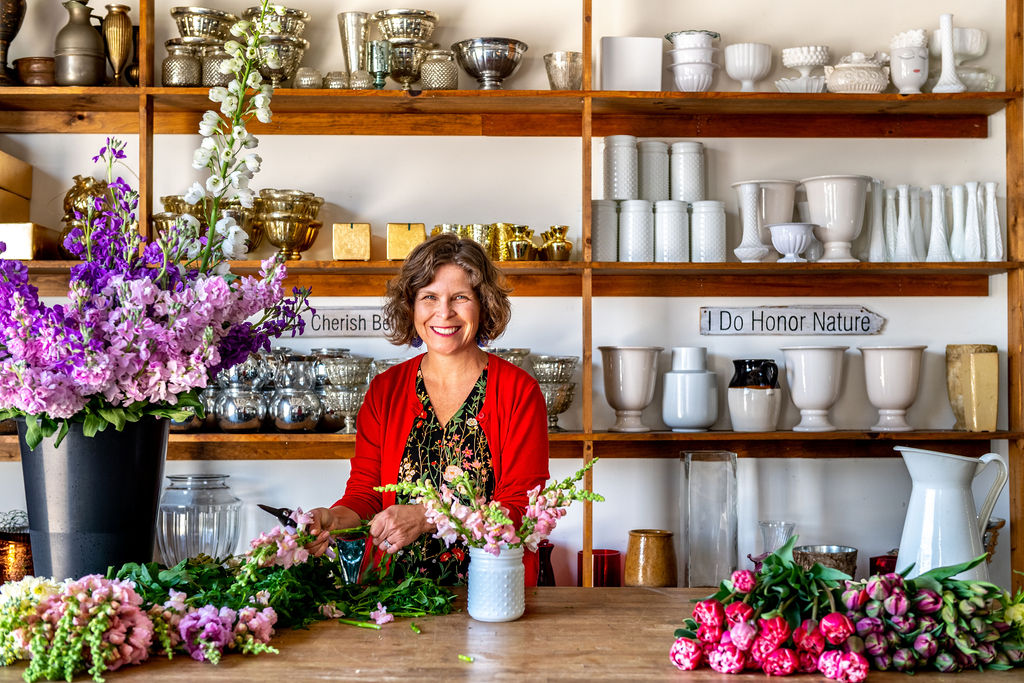Celebrate life’s special moments with vibrant flowers from florist lockhart.
Celebrate life’s special moments with vibrant flowers from florist lockhart.
Blog Article
Discover the Art of Floral Design: Tips From Professional Florists
Floral design is not simply an aesthetic venture; it is a nuanced art form based in principles such as equilibrium, proportion, and contrast. Expert flower designers supply vital understandings into choosing the appropriate blossoms tailored to certain celebrations, making sure that each setup resonates with its intended message.
Understanding Floral Design Principles
Typically overlooked by amateur floral designers, recognizing the essential principles of floral style is important for creating visually enticing plans (florist lockhart). These concepts act as the structure whereupon successful floral compositions are constructed, making certain consistency and balance in each development
Equilibrium refers to the circulation of visual weight within a setup, which can be balanced or unbalanced. Comparison, accomplished via differing colors, shapes, and textures, adds rate of interest and depth to the style.

Rhythm guides the visitor's eye with the plan, typically completed by duplicating forms or shades. Finally, unity makes certain that all elements of the layout collaborate cohesively, creating a feeling of completeness. By understanding these concepts, florists can boost their job, transforming basic arrangements right into sensational aesthetic declarations.
Inevitably, a solid understanding of these flower style concepts not only enhances creative thinking yet also fosters a much deeper appreciation for the creativity associated with floral arrangements (florist lockhart). Through method and application, amateur florists can establish their skills and produce memorable styles
Picking the Right Flowers
Selecting the suitable flowers is an important action in the flower layout procedure, directly affecting the overall aesthetic and efficiency of the plan. To start, take into consideration the celebration; different events call for unique flower types. As an example, enchanting settings might take advantage of roses, while pleasant parties might suit sunflowers or gerbera sissies.
Use a color wheel to identify complementary or similar color schemes that can produce a natural appearance. Additionally, consider the season; seasonal flowers not just make sure freshness however additionally typically come at a lower expense, making them a functional selection.
An additional essential variable is the intended durability of the arrangement. By thoughtfully picking flowers, you can create arrangements that reverberate with their designated objective and target market.
Strategies for Arrangement

An additional effective method is the "line design," which emphasizes the all-natural lines and forms of the flowers. By utilizing long-stemmed blossoms, developers can produce a sense of motion and circulation in the setup, attracting the eye along the lines created by the stems. Furthermore, integrating varying heights in the plan includes depth and rate of interest, permitting the visitor to check out the item from various angles.
The "color blocking" technique is likewise valuable, where shades are organized together to develop strong aesthetic declarations. This technique can evoke particular emotions and established the mood of the plan. Don't forget the relevance of adverse room; leaving gaps within the plan enables for taking a breath area, improving the general aesthetic and protecting against overcrowding. Mastery of these techniques will definitely elevate your floral layout abilities.

Seasonal Floral Inspirations
Including Continued seasonal aspects into flower layouts can exceptionally boost their charm and significance. By straightening floral arrangements with the changing seasons, florists can stimulate specific state of minds, themes, and colors that resonate with clients and the atmosphere. Each period provides an unique scheme of blooms and foliage that allows for creativity and motivation.
Autumn's abundant tones can be caught through dahlias, chrysanthemums, and ornamental grasses, creating cozy, inviting plans that reflect the harvest. Winter offers a serene visual with evergreens, amaryllis, and seasonal berries, best for evoking a feeling of peace and festivity.
Taking Care Of Your Setups
Taking care of floral arrangements is important to maintain their beauty and longevity. Correct care guarantees that your flowers continue to be lively and fresh, improving the aesthetic appeal of your area. Start by positioning your plan in a trendy place, away from have a peek at this site straight sunlight and drafts, as extreme temperatures can create wilting and discoloration.
On a regular basis check the water level in the flower holder, ensuring it is enough to cover the stems properly. Change the water every couple of days to stop microbial development, which can shorten the lifespan of your setup.
Furthermore, take into consideration the kind of blossoms in your setup; some might call for certain care. Stay clear of positioning your setups near ripening fruit, as ethylene gas can accelerate wilting.

Verdict
Finally, grasping the art of flower design includes a detailed understanding of foundational principles, mindful option of blossoms, and the application of reliable setup strategies. Seasonal ideas even more enhance creativity, while correct care guarantees that flower displays maintain their charm and long life. By incorporating these aspects, people can produce impactful arrangements that share emotion and serve their designated objective, inevitably enhancing the experience of both the maker and the recipient.
Report this page